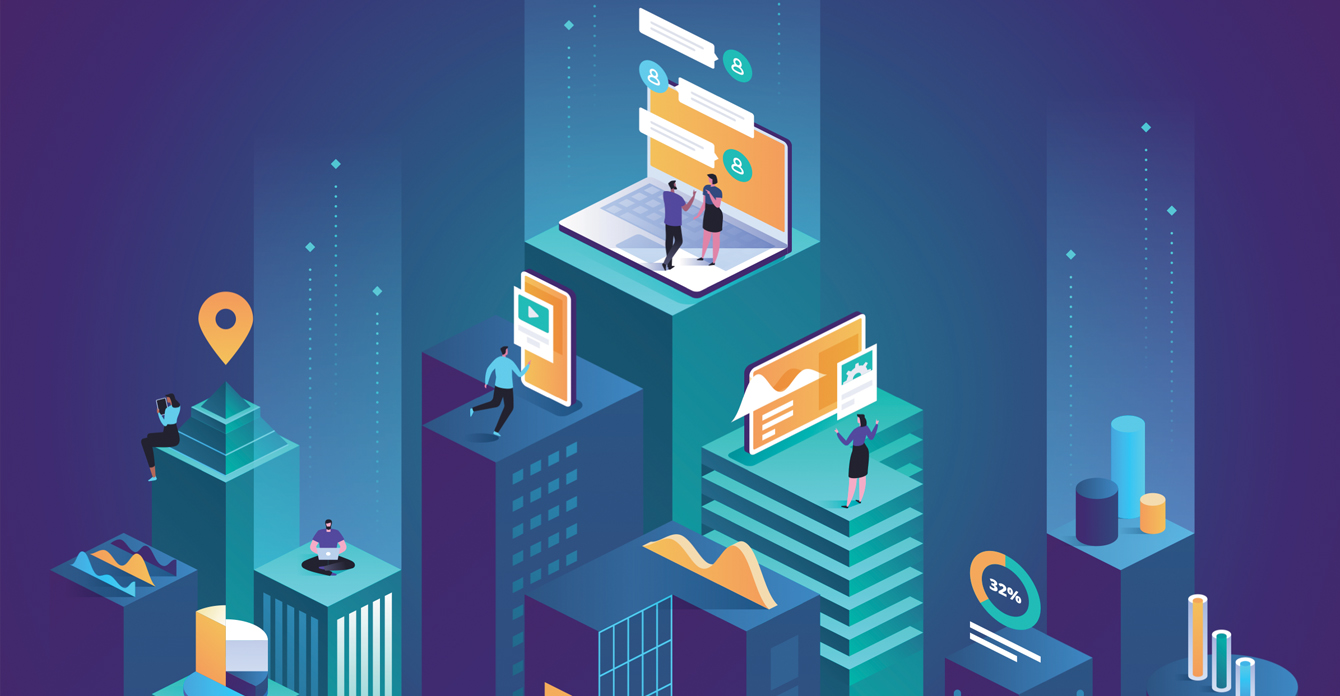During the COVID-19 pandemic, everything about our world changed—including what we expect from, and how we interact with, a brand’s online presence. Consumers turned to websites like never before—whether for managing their money, choosing a college or even visiting a doctor—and they’re probably going to continue to do so (to some degree). Find out how leveraging the latest website development trends can provide your audience with the customized experience they crave and help you build (back) the business you want.
Virtual Reality (VR). In VR, visitors enter an artificial environment created by a computer and use their own movement and senses to personalize the experience. It’s now becoming available in more pragmatic and useful ways, making the VR experience possible with just the click of a button. Using VR web apps, potential students can take a virtual walk around the campus or dining hall, shoppers can try clothes on in a boutique, and more—all in a way that closely simulates real life. VR is also being explored to help reduce patient worry and anxiety before, during and after medical procedures—potentially resulting in a more positive patient experience and an improved reputation for your hospital or medical center.
Augmented Reality (AR). AR enhances a visitor’s actual environment by layering fabricated images over what’s real. AR not only helps improve UX on desktop and mobile, it can also be combined with headsets to provide an up-close and personal experience. Today, several financial institutions are exploring the use of AR to facilitate the loan process through an immersive interface. For example, augmented reality car loan applications bring the entire customer car purchasing journey—from exploration and awareness to the decision or buying stage—into a mobile app, creating a more positive experience for the consumer and a direct sales funnel for the bank. It’s a win-win.
Artificial Intelligence (AI). AI enables a computer to imitate and replicate intelligent human behavior. A website that’s little more than “brochureware” does not work in today’s business climate. Your website needs to work (virtually) for you the same way your employees do: Anticipating the user’s reason for visiting and being ready with an appropriate call to action. For example: AI can help deliver better customer service during a “live-chat” by monitoring the call and offering the agent appropriate “canned” responses to help successfully navigate the call—and satisfy the caller.
Gone are the days of crowded waiting rooms and admissions offices; they’ve been replaced by mobile apps and increased traffic to websites, including yours. To ensure that your online presence attracts those visitors and provides the solutions they want and need now, consider including one or all of these enhancements in your website design. They can help turn prospects into new patients, students or accountholders (even from a distance).









